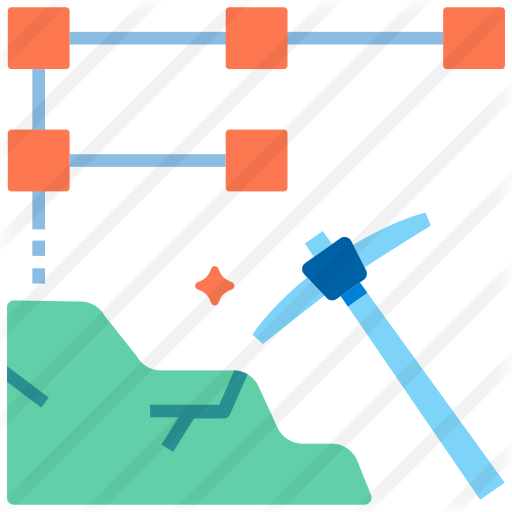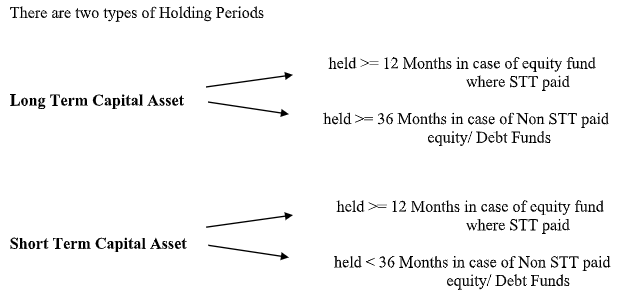
A number of economists have suggested that shopping at large discount chains such as Walmart and rent-to-own establishments vastly represent a large percentage of goods referred to as «inferior». Consumers will generally prefer cheaper cars when their income is constricted. As a consumer’s income increases, the demand for the cheap cars will decrease, while demand for costly cars will increase, so cheap cars are inferior goods. The goods whose demand increases even when there is an increase in the price of the commodity are known as Giffen Goods.
Consumers usually purchase inferior goods because they are essential for their life; like, coarse grains, etc. For example, if the consumer’s income increases and he prefers to replace his single-door refrigerator with French Door Style Refrigerator, then the demand for Single Door Refrigerator will fall. Also, in this case, the Single Door Refrigerator is the Inferior Good. One of the key differences between inferior and normal goods is the income elasticity of demand.

Any information contained within this essay is intended for educational purposes only. It should not be treated as authoritative or accurate when considering investments or other financial products. It is essential to consider the value proposition of a product before making a purchasing decision. Sometimes, spending a little more money upfront may lead to long-term cost savings or a higher-quality product. However, consumers should also consider quality and desirability when making purchasing decisions.
Chapter 6: Concepts of Cost and Revenue
Clearly, the price elasticity of demand plays a crucial role in monopoly price setting. As long as demand is elastic, total revenue will rise when the monopoly lowers its price, but this will not be true when demand becomes inelastic. Therefore, the monopolist will expand output only in the elastic portion of its demand curve. Understanding the differences between inferior and normal goods, such as the income elasticity of demand and quality and perception, can also help consumers make informed purchasing decisions. The second stylized fact is that the expenditure elasticity of the carbon footprint is generally below 1. Per unit of spending, buying energy for heating or gasoline for driving a car (direct emissions) releases more carbon than buying goods or services (indirect emissions).
- This phenomenon is notable because it violates the law of demand, whereby demand should increase as price falls and decrease as price rises.
- Therefore, when incomes rise, demand for these items tends to decrease accordingly.
- The global recovery is threatened by intensifying strains in the euro area and fragilities elsewhere.
- Isaksen and Narbel (2017) have recently devoted themselves to explaining why the carbon footprint is proportional to expenditure in this country.
- The sum of the price elasticities for the prices of the various goods with respect to the price of one good, say good i, multiplied by the budget shares, equals minus the budget share of the ith good.
Growth in emerging and developing economies is also expected to slow because of the worsening external environment and a weakening of internal demand. The most immediate policy challenge is to restore confidence and put an end to the crisis in the euro area by supporting growth, while sustaining adjustment, containing deleveraging, and providing more liquidity and monetary accommodation. In other major advanced economies, the key policy requirements are to address medium-term fiscal imbalances and to repair and reform financial systems, while sustaining the recovery. In emerging and developing economies, near-term policy should focus on responding to moderating domestic growth and to slowing external demand from advanced economies. It is important to note that the monopolist will never produce the output at any level, where MR is negative. In other words, the monopolist can earn larger profits by restricting the output.
Ask a Financial Professional Any Question
Therefore, no rational monopolist will produce on that portion of the demand curve, where MR is negative, i.e., the elasticity of demand is less than one? That is why; no monopolist ever operates on the inelastic portion of the average revenue curve or the demand curve. Under certain exceptional cases, the cost of additional units of output, i.e., marginal cost (MC) may be equal to zero. With constant value ‘zero’ of marginal cost, the value of average cost is also constant and is equal to zero. With zero cost of production, the monopolist has only to decide at which output, the total revenue will be maximum.
Taste of Life: When mango chutney defined culinary appreciation and appropriation – Hindustan Times
Taste of Life: When mango chutney defined culinary appreciation and appropriation.
Posted: Wed, 07 Jun 2023 07:00:00 GMT [source]
Consider the hotel you may stay at based on how your personal finances are doing. You may also choose to attend different entertainment events or fly first class as opposed to opting to cheaper, inferior travel options. Price discrimination can be defined as the ‘practice by a seller of charging different prices from different buyers for the same good or service’. A monopolist has the leverage to carry out price discrimination as he is the market and acts as per his suitability. This law summarizes the effect price changes have on consumer behavior.
Special Section: Ecological Economics and Environmental History
Actually using the EU mix for the carbon embodied in electricity lowers the expenditure elasticity of the carbon footprint to 0.64. The reason may be similar in Switzerland, for the electricity mix is dominated by nuclear inferior goods examples india and hydro power. From this observation, one can predict that, keeping the structure of spending constant, the expenditure elasticity will rise as decarbonization in electricity, housing and transport develops.
Wholesale and Retail Difference: Exploring Two Key Business Models – Indian Retailer
Wholesale and Retail Difference: Exploring Two Key Business Models.
Posted: Wed, 14 Jun 2023 11:53:35 GMT [source]
For example, if the consumer’s income increases and he prefers to replace his Single-Door Refrigerator with French door style refrigerator, then the demand for Single-Door Refrigerator will fall. Also, in this case, the Single-Door Refrigerator is the Inferior Good. Inferior goods aren’t always the same in different parts of the world. For example, something as simple as fast food may be considered an inferior good in the U.S., but it may be deemed a normal good for people in developing nations. A normal good is one whose demand increases when people’s incomes start to increase, giving it a positive income elasticity of demand. In economics, the demand for inferior goods decreases as income increases or the economy improves.
Normal And Inferior Goods And Examples Economics Essay
Just because a product is cheaper than its alternatives does not necessarily make it an inferior good. While inferior goods are typically cheaper than their alternatives, consumers need to consider their personal preferences and needs when making purchasing decisions. These items are often cheaper than their higher-quality alternatives and are considered inferior because of their lower quality or desirability. For example, consumers who purchase fast food instead of preparing a healthy meal at home choose an inferior product because it is more convenient or affordable. The goods upon which the customers reduce demand due to an increase in their incomes are inferior goods. If the income starts decreasing due to any reason, the demand for inferior goods escalates.
A product that is significantly cheaper than its alternatives may be of lower quality or has fewer desirable features. Clothing and fashion items are other examples of inferior goods. Consumers may purchase lower-quality or outdated clothing items when trying to save money. The US Department of Commerce is a government agency that collects and publishes data on economic indicators, including consumer spending and retail sales, which can provide insights into trends in the consumption of inferior goods. See the differences in normal vs. inferior goods, inferior good elasticity and industry examples of inferior goods. Occasionally people prefer inferior goods, even if they
receive a high income.
The homogeneity condition entails that the sum of the income and price elasticities equals zero. The same proportional increase in income and all prices will have no effect on the quantity demanded. Thus, knowing all but one of those elasticities enables one to find the remaining one.
- When their income rises, they prefer higher quality goods that cost more.
- Understanding the differences between inferior and normal goods, such as the income elasticity of demand and quality and perception, can also help consumers make informed purchasing decisions.
- Regarding parameter estimates, the coefficients for the ML-MPD and Logit models have identical signs, except for the income variable.
In India, Murthy et al. (1997b) report that emissions per unit of expenditure are typically 20–30% higher in urban (richer) areas than in rural ones. In the Philippines, Seriño and Klasen (2015) also point to the greater use of transportation and fossil energy in cities compared to poorer rural areas. This suggests that developing countries can show a different pattern than developed countries when fossil energy is generally an inferior good.
These properties imply that if one knows all but one of, say, the income elasticities, one can reconstruct the remaining one as a residual. At the same time, consumer behavior varies among countries and geographic regions. Consumer behavior is determined by various factors, including the prevailing traditions and geographic or climate characteristics. Therefore, certain goods can be considered inferior in one geographic region, while in the other region, the same goods will be considered normal. These goods are highly desired and can be purchased when a consumer’s income rises. In other words, the ability to purchase luxury goods is dependent on a consumer’s wealth or assets.
These developments, however, are not expected to sustain significant momentum going forward. Monopoly is a form of imperfect market structure where there is only one seller of a product. A monopoly firm may be owned by a person, a few numbers of partners or a joint stock company. The characteristic feature of single seller eliminates the distinction between the firm and the industry.
Consumers may be willing to pay more for normal goods because they believe they offer a higher value proposition or better quality. Take your learning and productivity to the next level with our Premium Templates. Access and download collection of free Templates to help power your productivity and performance. The term «inferior good» refers to affordability, rather than quality, even though some inferior goods may be of lower quality.

However, when a consumer’s income increases, he or she can afford the more expensive substitutes. The goods whose demand reduces when there is an increase in the income of consumer are known as Inferior Goods. In simple terms, there exists an inverse relationship between the consumer’s income and demand for inferior goods.
The goods whose demand does not change with a change in income of the consumer. Some of the examples of Necessity Goods are wheat flour, salt, medicines, etc. Necessity goods are essential for human existence, because of which these goods are found at a higher place in the consumer’s order of preference. A Veblen good is an item whose increase in price may actually result in higher sales. These types of goods are often a subset of a luxury good, and this type of good often defies many traditional concepts of economics. Should the artwork actually be valued at $1 million, theory holds that more investors would be interest as there is greater potential value.